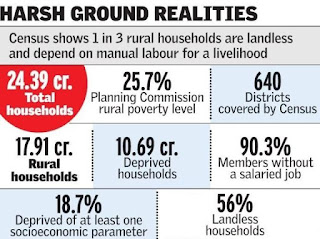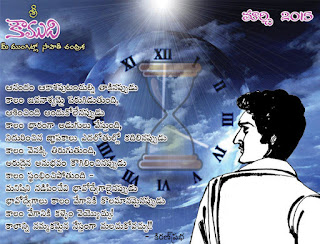Photo: Jewel Samad/Getty Images
July 14, 2015
By Matthew Duss @mattduss
“I don't want to just end the war, but I want to end the mindset that got us into war in the first place.” That was Senator Barack Obama, speaking about Iraq in a 2008 primary debate. For a candidate who had seen his own campaign surge on the strength of his opposition to the Iraq war, it was a near-perfect distillation of the change he hoped to bring to America’s foreign policy discussion, long dominated by hawkish views that were shattering against the bloody reality of Iraq’s civil war.
During the 2008 campaign, Obama started—and won—a hugely significant debate about the proper uses of U.S. power. His declaration that he would not be afraid to talk to America’s enemies brought accusations of naiveté from both his Republican adversary John McCain and Democratic primary opponent Hillary Clinton, who would go on to begin implementing that same policy toward Iran as Obama’s first Secretary of State.
Ending that mindset has proven a difficult task. The idea that military force is decisive in a way that diplomacy is not remains a very attractive one, especially for politicians looking for cheap ways to appear tough. And to be fair, Obama has moved slowly on this, often frustratingly so. There are policy areas, particularly the use of drone warfare, where he has continued the commitment to the use of force. But Obama’s Iran policy is one in which the president has followed through on that central promise of his candidacy, and with great results. In short, Obama’s Iran policy is the anti–Iraq war.
The invasion and occupation of Iraq resulted in the deaths of more than 4,000 U.S. troops and more than 100,000 Iraqis, including many times that number seriously and permanently injured. It cost American taxpayers trillions of dollars. It empowered both Iran and Al Qaeda in the region, and led to the creation of the Islamic State. Its negative repercussions will bedevil the region, and U.S. policymakers, for decades to come. Conceived by the Bush administration as a demonstration of American military power, it succeeded only in demonstrating its limits.
In stark contrast, the historic nuclear deal announced Tuesday in Vienna between the U.S. and its P5+1 partners and Iran demonstrates an alternative vision of the use of American power. It shows that our security and the security of our partners can be effectively advanced through multilateral diplomacy, and proves once again the importance of U.S. global leadership in addressing shared problems. Specifically, it achieves the central goal of blocking Iran's path to a nuclear weapon by dramatically reducing its capacity to produce nuclear fuel (something which continued to expand even under tight international sanctions), and by putting Iran's entire nuclear infrastructure under the most intensive inspections regime in history.
As a result of the deal, the International Atomic Energy Agency will have eyes on Iran's nuclear program at every level: mining, procurement, production, enrichment, etc. Not only does this deep visibility create a deterrent to cheating, but it also means that, when the intensive inspection period expires years from now, the IAEA will possess far more detailed information and understanding of Iran's program than any other in the world.
And by demonstrating to the Iranian regime that a positive change in its behavior can produce benefits, the deal could empower more moderate elements within Iran calling for broader reforms. This is one reason why the International Campaign for Human Rights in Iran has supported this diplomacy all along, and hailed the agreement this morning as “a victory of diplomacy and peace,” and why Iran’s hawks remain hostile to any agreement, a position they’ve long shared with U.S. hardliners. (It’s no secret why the most ardent supporters of the Iraq war have been the loudest critics of Iran diplomacy: The failure of the former and success of the latter utterly discredits their claims about how the world works.)
Frankly, if there were any justice, we would be seeing an outbreak of “Support Our Diplomats” bumper stickers. Americans rightly honor those who defend our security with military strength, and it’s time to accord the same to those who do it through effective and painstaking diplomacy.
To be clear, this agreement addresses one contentious issue among many that the U.S. and the international community have with Iran. Now that the deal is inked, the administration must articulate a more detailed strategy for confronting Iran’s regional troublemaking. There's precedent for this: The U.S. did it with the USSR, a far more powerful and threatening adversary than Iran, even as we were negotiating and implementing arms agreements. At the same time, the reality of post-Iraq war Middle East requires the U.S. and Iran to look for ways to confront shared challenges, particularly the growth of ISIS. There’s no “one-size-fits-all” policy for a region that’s increasingly fragmented. And the U.S. has no interest in taking sides in a sectarian Cold War.
Ending the mindset that got us into Iraq isn’t the work of one presidency, but of a generation. That work received a huge boost today. The Vienna agreement is a victory for a better vision of foreign policy.
Matthew Duss is president of the Foundation for Middle East Peace, based in Washington, D.C.
“I don't want to just end the war, but I want to end the mindset that got us into war in the first place.” That was Senator Barack Obama, speaking about Iraq in a 2008 primary debate. For a candidate who had seen his own campaign surge on the strength of his opposition to the Iraq war, it was a near-perfect distillation of the change he hoped to bring to America’s foreign policy discussion, long dominated by hawkish views that were shattering against the bloody reality of Iraq’s civil war.
During the 2008 campaign, Obama started—and won—a hugely significant debate about the proper uses of U.S. power. His declaration that he would not be afraid to talk to America’s enemies brought accusations of naiveté from both his Republican adversary John McCain and Democratic primary opponent Hillary Clinton, who would go on to begin implementing that same policy toward Iran as Obama’s first Secretary of State.
Ending that mindset has proven a difficult task. The idea that military force is decisive in a way that diplomacy is not remains a very attractive one, especially for politicians looking for cheap ways to appear tough. And to be fair, Obama has moved slowly on this, often frustratingly so. There are policy areas, particularly the use of drone warfare, where he has continued the commitment to the use of force. But Obama’s Iran policy is one in which the president has followed through on that central promise of his candidacy, and with great results. In short, Obama’s Iran policy is the anti–Iraq war.
The invasion and occupation of Iraq resulted in the deaths of more than 4,000 U.S. troops and more than 100,000 Iraqis, including many times that number seriously and permanently injured. It cost American taxpayers trillions of dollars. It empowered both Iran and Al Qaeda in the region, and led to the creation of the Islamic State. Its negative repercussions will bedevil the region, and U.S. policymakers, for decades to come. Conceived by the Bush administration as a demonstration of American military power, it succeeded only in demonstrating its limits.
In stark contrast, the historic nuclear deal announced Tuesday in Vienna between the U.S. and its P5+1 partners and Iran demonstrates an alternative vision of the use of American power. It shows that our security and the security of our partners can be effectively advanced through multilateral diplomacy, and proves once again the importance of U.S. global leadership in addressing shared problems. Specifically, it achieves the central goal of blocking Iran's path to a nuclear weapon by dramatically reducing its capacity to produce nuclear fuel (something which continued to expand even under tight international sanctions), and by putting Iran's entire nuclear infrastructure under the most intensive inspections regime in history.
As a result of the deal, the International Atomic Energy Agency will have eyes on Iran's nuclear program at every level: mining, procurement, production, enrichment, etc. Not only does this deep visibility create a deterrent to cheating, but it also means that, when the intensive inspection period expires years from now, the IAEA will possess far more detailed information and understanding of Iran's program than any other in the world.
And by demonstrating to the Iranian regime that a positive change in its behavior can produce benefits, the deal could empower more moderate elements within Iran calling for broader reforms. This is one reason why the International Campaign for Human Rights in Iran has supported this diplomacy all along, and hailed the agreement this morning as “a victory of diplomacy and peace,” and why Iran’s hawks remain hostile to any agreement, a position they’ve long shared with U.S. hardliners. (It’s no secret why the most ardent supporters of the Iraq war have been the loudest critics of Iran diplomacy: The failure of the former and success of the latter utterly discredits their claims about how the world works.)
Frankly, if there were any justice, we would be seeing an outbreak of “Support Our Diplomats” bumper stickers. Americans rightly honor those who defend our security with military strength, and it’s time to accord the same to those who do it through effective and painstaking diplomacy.
To be clear, this agreement addresses one contentious issue among many that the U.S. and the international community have with Iran. Now that the deal is inked, the administration must articulate a more detailed strategy for confronting Iran’s regional troublemaking. There's precedent for this: The U.S. did it with the USSR, a far more powerful and threatening adversary than Iran, even as we were negotiating and implementing arms agreements. At the same time, the reality of post-Iraq war Middle East requires the U.S. and Iran to look for ways to confront shared challenges, particularly the growth of ISIS. There’s no “one-size-fits-all” policy for a region that’s increasingly fragmented. And the U.S. has no interest in taking sides in a sectarian Cold War.
Ending the mindset that got us into Iraq isn’t the work of one presidency, but of a generation. That work received a huge boost today. The Vienna agreement is a victory for a better vision of foreign policy.
Matthew Duss is president of the Foundation for Middle East Peace, based in Washington, D.C.
Source: newrepublic
























